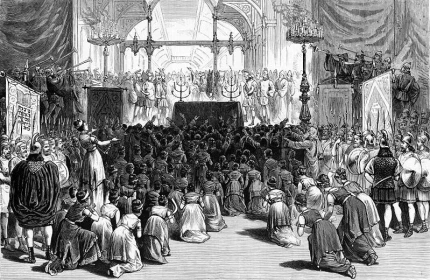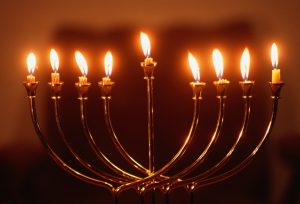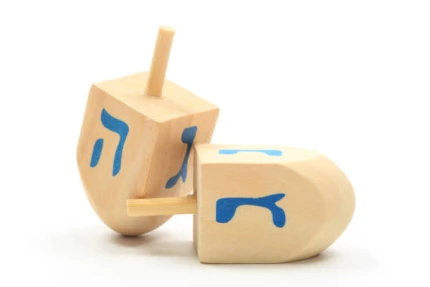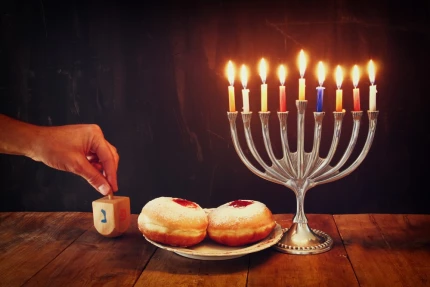Hanukkah: dates and traditions
National holidays are an essential element of Israeli life. Each significant date has special statutes unique to it. Hanukkah is one of the feast days introduced into Jewish tradition by the Sages. It’s celebrated in full compliance with the commandments and ancient customs. One of them is mourning for the dead are forbidden for 8 days. This period is also called the holiday of light because every day it’s customary to light candles. In this post, you’ll learn when is Hanukkah, all about the history, and its main rituals.
an Israeli citizenship specialist
Modern celebrations around the world
Hanukkah is celebrated in any country with a Jewish population. However, Hanukkah is not always an official public holiday. TOP-3 countries that celebrate Hanukkah in modern style are the USA, Hungary, and Israel.
In Israel, the Jewish calendar operates alongside the Gregorian calendar. Jewish holidays follow this lunar-solar system, where each phase of the moon aligns with a specific date. The miracle of the oil occurred on the 25th of Kislev and lasted for eight days, extending into the month of Tevet. Kislev, the third month of the Jewish calendar, typically falls in November or December on the Gregorian calendar. For example, in 2023 (corresponding to the year 5784 in the Jewish calendar), Hanukkah begins on the evening of December 7 and concludes on December 15.
The structure of the Jewish calendar was finalized in 359 CE under the leadership of Hillel II, based on a system dating back to 3761 BCE.
Dates of celebration
Dates are given in the table below 5-year dates (2023-2027):
| Begins at Sundown on | Ends on the Evening of | |
| 2023 | December 7th, 2023 | December 15th, 2023 |
| 2024 | December 25th, 2024 | January 2nd, 2025 |
| 2025 | December 14th, 2025 | December 22nd, 2025 |
| 2026 | December 4th, 2026 | December 12th, 2026 |
| 2027 | December 24th, 2027 | January 1st, 2028 |
Holiday description
Hanukkah holds great significance for Jewish communities worldwide. This holiday commemorates the rededication of the Holy Temple, which took place on the 25th of Kislev. It is celebrated with joy and gratitude as a time to honor the Most High. Tradition tells that when priests lit the Menorah to purify the Temple in Jerusalem, the Lord bestowed blessings on the Jews who upheld His commandments. Since that moment, Hanukkah has symbolized light, renewal, and faith.
According to legend, on the 25th of Kislev in 164 BCE, the victorious Jews ascended to the Temple to reignite the sacred flame. However, nearly all jars of holy oil had been contaminated, leaving just one untouched, sealed by the high priest. Although the amount of oil was only enough to sustain the flame for a single day, the fire miraculously burned for eight days. This event inspired the Sages to establish an eight-day celebration starting on Kislev 25, during which Jews praise God and light the Hanukkah candles each evening.
Symbolism
Hanukkiah is placed in a room where it’s customary to gather the whole family, in the most prominent place. Often the stand is exhibited on the windowsill to share the miracle with passers-by and neighbors. The sacrament of lighting the lamps is entrusted to the man, the head of the family, at the moment when the first stars appear in the sky.
The commandment of Hanukkah indicates that everyone is obligated to light Hanukkah lights during the holiday, even a beggar must find the means to do so. it’s customary to place oversized Hanukkiahs near government buildings and institutions.
Prohibitions
Hanukkah is a holiday of joy and light, so mourning is forbidden on this day. It’s forbidden to mourn the dead, to be sad or sorrowful. Also, it’s forbidden to refuse to eat or fast. During Hanukkah, women are not allowed to do household chores, especially during the hours when the Hanukkah lights are burning. In this way they express their gratitude to Divine for the miracle of Hanukkah and their liberation from the oppression and mockery to which they were subjected under Greek rule. Schools take an 8-day vacation so that children can spend the days of Hanukkah with their families.
Celebration concept
During Hanukkah, it is customary for Jewish people to greet one another with the words “Hag Hanukkah Sameach,” which translates to “Happy Holidays” in Hebrew. This warm greeting has become an enduring tradition. Throughout the holiday week, communities host charity events and organize plays and activities for children.
The holiday table is a centerpiece of celebration, featuring a variety of oil-based dishes that honor the miracle of the sacred oil. Popular foods include sufganiyot (doughnuts) with chocolate or nut toppings, crispy latkes (potato pancakes), cottage cheese doughnuts, and sweet treats like pineapple in syrup.
To avoid persecution, Jewish boys would attend secret study sessions, bringing spinning tops with them. If a stranger approached, they pretended to be playing a game rather than engaging in religious study. Today, playing dreidel is a beloved Hanukkah tradition. It serves as a fun and meaningful way to remember the resilience and faith of those who upheld their heritage during challenging times.
History overview
Despite the fact that Hanukkah is not mentioned in the Torah and is considered a minor holiday, it’s celebrated on a large scale: monumental Hanukkiahs can be found not only in Israel but also in some cities in other countries, people share recipes for successful latkes and gather for public Hanukkiah lightings. Nevertheless, during Hanukkah, one goes to work. Only children rest, and schools and kindergartens have vacations during the vacation. it’s believed that miracles happen during Hanukkah: something wonderful is bound to happen to every Jewish family and to every individual. The stories of these miracles are called “nes Hanukkah” — the Hanukkah miracle.
Hanukkah is not just a symbol of Jewish culture. it’s a holiday that encourages us to remember and honor the commandments of the Sages and to study the Torah in depth.
Menorah mystery
The main tradition of the holiday is the lighting of the lamps. And it should be done according to strict regulations. The Eight Days of Hanukkah — Lighting Menorah Candles. All over the world, holiday week is a time of celebration. In honor of Hanukkah, the Hallel prayer is recited in synagogues in the evenings, and Hanukkah candles and Hanukkiahs are a must at home.
Traditional cuisine
As early as the morning before Hanukkah, Israeli cafes and pastry shops display trays of ruddy sufganiyet doughnuts. The chubby balls are covered with chocolate or sugar glaze, and decorated with nuts and powdered sugar, and inside the airy dough there is a sweet filling: jam, whipped cream or buttercream. it’s believed that the tradition of baking “loose dough” (that’s how sufganiyet is translated) for Passover originated among German and Polish Jews back in the XVII century: during periods of persecution brave women prepared sufganiyet, risking their freedom and even their lives, because, unlike European dumplings and buns, they were not baked in the oven, but fried in oil — the smell and smoke from the fryer could identify the faithful Jews by ill-wishers. Such is the heroic past of a quite innocent (though not in calorie counting) holiday treat.
Dairy and cheese dishes are another important element of the Jewish holiday table, including Hanukkah. it’s associated with other fateful events for the Jews: it honors the feat of Judith, the daughter of the High Priest, who lured Holofernes, the leader of the Assyrian army that invaded Israel, into her chambers and fed him a pie with salty cheese, which he was drinking wine without measure. As a result, Holofernes became intoxicated and lost his head – literally. When he learned of his death, the troops he led scattered in fear, and Israel was miraculously spared from danger. In general, the more cheese, pastries and their derivatives on the table during these feast days, the better.
Yes, people from different cultures also celebrate the holiday if they have Jewish friends, partners, neighbors, etc. It starts in the 3rd month of the Jewish calendar that corresponds to November or December. It catches up a December 25, 2024 — January 2, 2025 period.
an Israeli citizenship specialist




